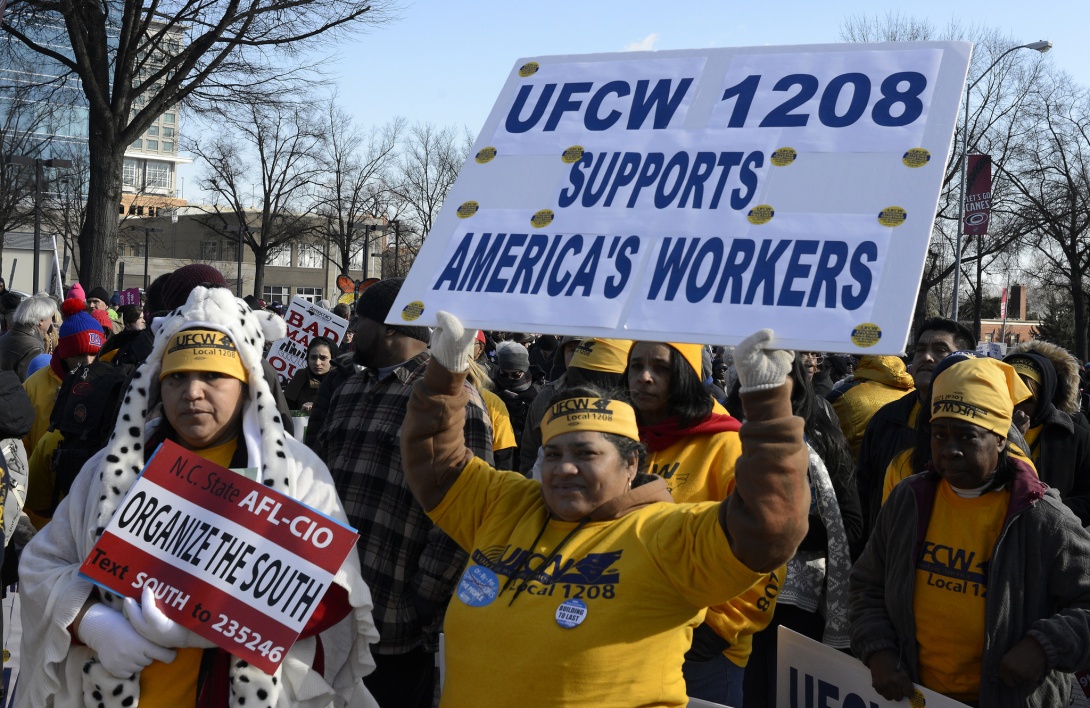INSTITUTE INDEX: How labor unions curb racial inequality

Photo of union members taking part in the 2016 Moral March in Raleigh, North Carolina, is by Stephen Melkisethian via Flickr.
Decade in which the income gap began to widen dramatically in the U.S., a period that also saw the beginning of a sharp decline in unionization rates: 1970s
Percent drop in the overall U.S. unionization rate over the past three decades: 48
In the black unionization rate: 56
Percent of all U.S. workers who belonged to unions in the early 1980s vs. today: 23.3, 12.3
Percent of black workers who belonged to unions in the early 1980s vs. today: 31.7, 14.2
Percent of black workers in the South who belong to unions today: 8.9
Portion of the black population of the U.S. that lives in the South: more than 1/2
Rank of the South among U.S. regions with the greatest income inequality within communities: 1
Of the 13 Southern states, number where the the top 1 percent captured half or more of all income growth between 2009 and 2012: 10
Of the increase in wage inequality among women from 1973 to 2007, portion accounted for by de-unionization: 1/5
Among men: 1/3
Percent of white workers' median hourly wage earned by black workers in the U.S. last year: 75
Percent lower that the private sector's black-white wage gap would have been in 2007 if de-unionization had not occurred: 13
For every 10-point rise in unionization rates in U.S. companies, percent by which CEO pay is reduced: 2
Year in which the AFL-CIO adopted a resolution to make organizing the South one of its top priorities: 2013
Between 2014 and 2015, number of the 13 Southern states that gained union members: 8
(Click on figure to go to source. Many of the numbers in this index come from "Black Workers, Unions, and Inequality," a new report by the Center for Economic and Policy Research.)
Tags
Sue Sturgis
Sue is the former editorial director of Facing South and the Institute for Southern Studies.
